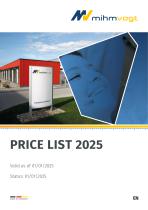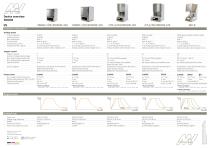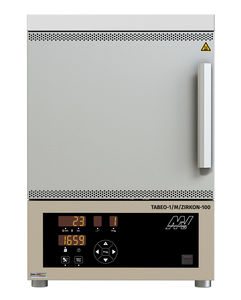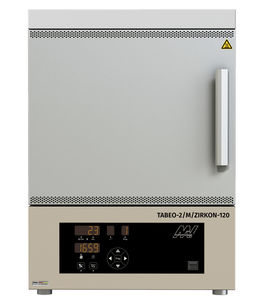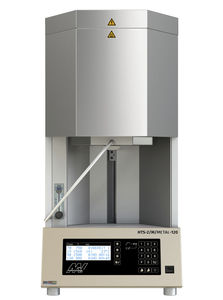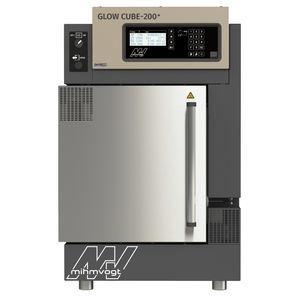
Sintering furnace HTS-2/M/ZIRKON-120for dental laboratorieszirconiahigh-temperature
Add to favorites
Compare this product
Characteristics
- Function
- sintering
- Applications
- for dental laboratories
- Designed for
- zirconia
- Temperature control
- high-temperature
- Temperature range
Max.: 1,650 °C
(3,002 °F)
Description
The redesigned HTS-2 model series combines the well-known features of previous models.
The HTS-2 offers you not only the fusion of the properties of old models, but also a larger sintering capacity of up to 80 individual crowns. The heating system with four high-performance molybdenum disilicide heating elements (MoSi2) means that you can now choose whether to use the
conventional long-term sintering or the SPEED-sintering with a new improved heating rate up to 120°C/minute.
The simple, practical handling of the HT-series program control was also incorporated here with all its familiar functions; program display on a four-line LCD-display, timer function for sintering overnight or also using drying programs for wet-milled restorations. There are three service programs for servicing the heating chamber and the heating system.
60 SINGLE CROWNS or SINTERING DISC
30 programs capacity
9 heating stages
High-quality molybdenum-disilicide heating elements PRO
Heating-chamber capacity 2x Ø 120/30 mm
Program control (LCD-Display, 4 stages, 30 program capacity, Special functions)
Service programs
A - Temperature control*
only in conjunction with test-kit
C-Purge heating chamber
E- Regenerate heating elements
Thermocouple PtRh-Pt, type S
Temperature accuracy at 1500°C +/- 3°C
Timer function
Max. programmable heating rate 120°C/min.
Catalogs
Related Searches
- Heating furnace
- Laboratory furnace
- Benchtop furnace
- 1-door furnace
- Stainless steel furnace
- Drying furnace
- Mihm-Vogt dental laboratory oven
- Stainless steel fume hood
- Exhaust hood
- Mihm-Vogt high-temperature oven
- Muffle furnace
- Zirconia furnace
- Dental laboratory hood
- Heating oven
- Preheating furnace
- High-performance furnace
- Annealing furnace
- Modular fume hood
*Prices are pre-tax. They exclude delivery charges and customs duties and do not include additional charges for installation or activation options. Prices are indicative only and may vary by country, with changes to the cost of raw materials and exchange rates.


